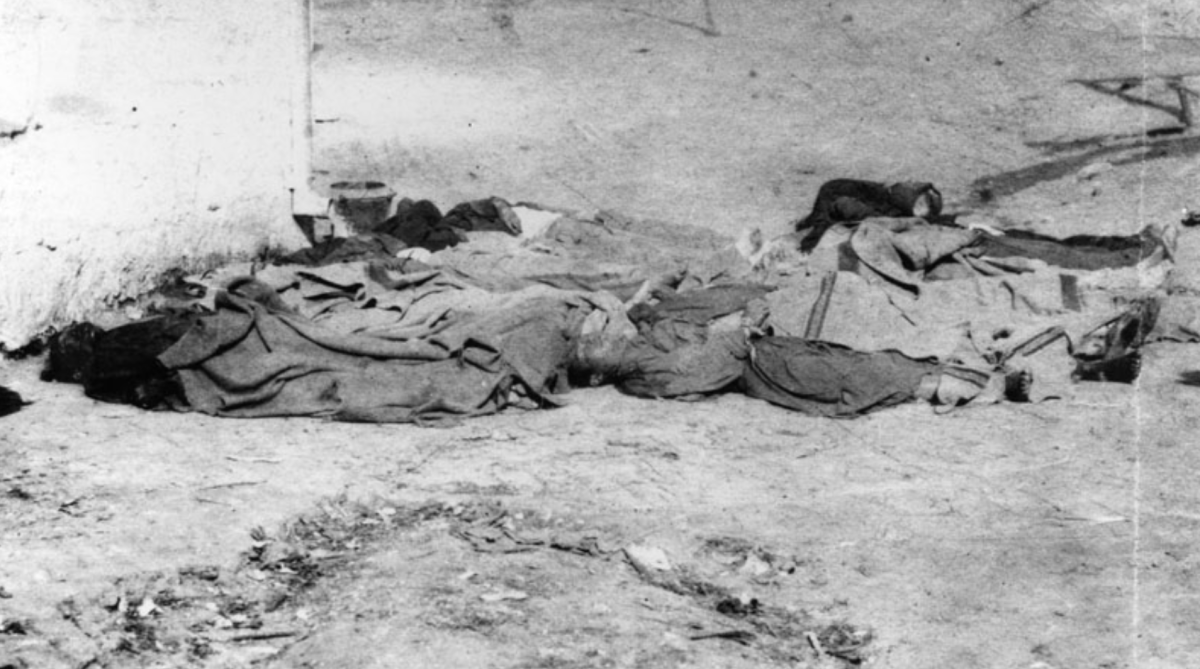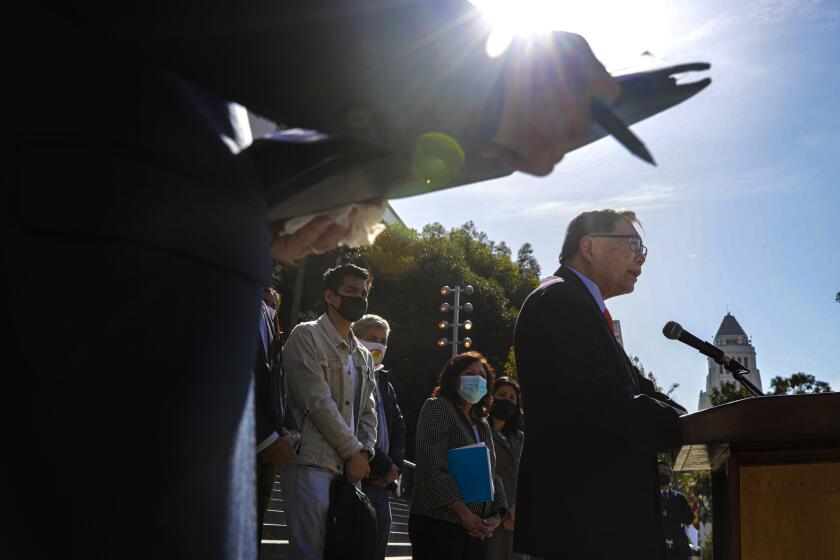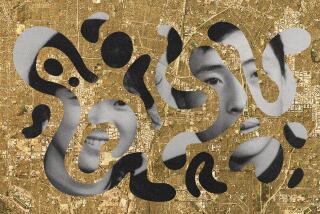The racist massacre that killed 10% of L.A.’s Chinese population and brought shame to the city
Warning: This story includes a graphic image.
The Los Angeles of 1871 was a violent, lawless place.
Historians have described it as one of the last cities to establish civil law enforcement institutions, relying instead on vigilante justice and mob rule.
It also was a place notorious for its mistreatment and exploitation of Black, Asian, Latino and Native Californians at the hands of white settlers. But the venom against Chinese Americans was particularly poisonous, fueled by editorials in the Los Angeles News that attacked them as “barbarians taking jobs away from whites.”
“Los Angeles in 1871 was a dirty, violent city of nearly 6,000 people. Though the city had a higher homicide rate than New York or Chicago, it employed only six police officers to maintain law and order. Lynchings and mob justice were commonplace,” the Los Angeles Public Library wrote.
It was this world 150 years ago that spawned the Chinese Massacre, a bloody siege that brought shame to Los Angeles and widespread changes in the way the city operated. But it did little to alter the core racism that Asians and other groups would continue to endure.

Many Asian Americans are bristling with pain and fury, seeing the Atlanta killings as a culmination of a steady drumbeat of racist attacks.
Oct. 24, 1871
The violence of this day was on a scale that even a city known for its brutality and racial attacks had never seen. In 1999, Cecila Rasmussen of The Times provided this narrative of the chain of events:
Gunfire erupted at 4 p.m., just as former city assessor-turned-patrolman Jesus Bilderrain was polishing off a whiskey at Higby’s saloon. Most of the barroom patrons shrugged off the commotion, but Bilderrain — pistol in hand — dutifully went out the swinging doors into the street. A short distance away, he found a man named Ah Choy shot through the neck (it was later determined this shooting was related to a feud between two Chinese gangs). As Bilderrain blew his whistle to summon help, bullets struck him in the shoulder and wrist.
Running to his rescue, saloon-owner-turned-rancher Robert Thompson was killed, shot through the heart by the same unseen gunmen, who also wounded some of the bystanders.
The rioters, meanwhile, rampaged on. Some climbed to the rooftops and used pickaxes to chop holes, firing through them at the immigrants inside. Two men who ran out into the street were cut down by gunmen on the roofs.
One by one, more victims were hauled from their hiding places, kicked, beaten, stabbed, shot and tortured by their captors. Some were dragged through the streets with ropes around their necks and hanged from a wooden awning over a sidewalk, a covered wagon or the crossbeam of a corral gate. Finally, 15 corpses — including those of a 14-year-old boy and the Chinese community’s only physician, Chee Long Tong — dangled in the City of the Angels. Four others died from gunshot wounds, bringing the death toll at the hands of the mob to 19 — 10% of the city’s tiny Chinese population.
Then, every rickety shanty in Chinatown was looted. “Boys, help yourselves,” was the cry. One lynching victim’s finger was cut off for the diamond ring he wore.
The leaders of the massacre paraded through the streets, displaying their booty, to the laughter and praise of the mob. An estimated $40,000 in cash, gold and jewels was stolen.
The next day’s local newspapers called the riot a “victory of the patriots over the heathens.”
For many Asian Americans, the killings further fueled fears about anti-Asian hatred that has mounted over the last year as police and advocacy groups have reported record numbers of hate crimes and harassment.
The aftermath
In the end, 19 people died in the attacks.
“Ten percent of the Chinese population had been killed. One of the Chinese caught up in the mob violence was the respected Dr. Gene Tong. In fact, of the killed, only one is thought to have participated in the original gunfight,” the library wrote in its history of the massacre.
Bringing justice for the massacre was going to be a tall order for a city with such weak government institutions and little inclination to hold those who killed accountable. As Rasmussen wrote:
During the subsequent coroner’s inquest and grand jury hearings, police and other city officials — fearful of being labeled “Chinese lovers” — shielded the guilty. “I didn’t recognize anyone” was the recurring statement.
There were no other witnesses, since discriminatory state legislation then prohibited Chinese from testifying in California courts. Still, 37 rioters were indicted, 15 tried and eight convicted of manslaughter. A little more than a year later, however, the California Supreme Court reversed the convictions on the grounds that the original indictment had failed to establish that the Chinese physician had been murdered.
An embarrassed U.S. government subsequently paid imperial China an indemnity to settle the whole affair.
The massacre was a black mark for Los Angeles, and city leaders responded by building up the Police Department and criminal justice system. Vigilante rule began to fade. But the racism endured by Chinese and other minority groups actually worsened.
“The massacre did not result in racial tolerance, in fact, anti-Chinese sentiment increased in the following years. The Anti-Coolie club was formed in 1876, counting many prominent citizens among its members, and the newspapers resumed their editorial attacks against the Chinese,” the library said in its account.
The massacre was largely forgotten for generations. But the history was revived in recent decades, in part by Chinese American activists. It was the subject of two history books: “Eternity Street” by John Mack Faragher and “The Chinatown War” by Scott Zesch.
Michael Woo, the first Chinese American councilman in Los Angeles, ended his review of “The Chinatown War” this way:
“Zesch asks whether the right lessons have been learned. He argues that the 1871 massacre may have marked the end of mob justice in Los Angeles. But Zesch attributes this milestone primarily to improved law enforcement, not to the better angels of our nature taming our impulse to scapegoat, pander and pick up a gun.”

More to Read
Sign up for Essential California
The most important California stories and recommendations in your inbox every morning.
You may occasionally receive promotional content from the Los Angeles Times.












